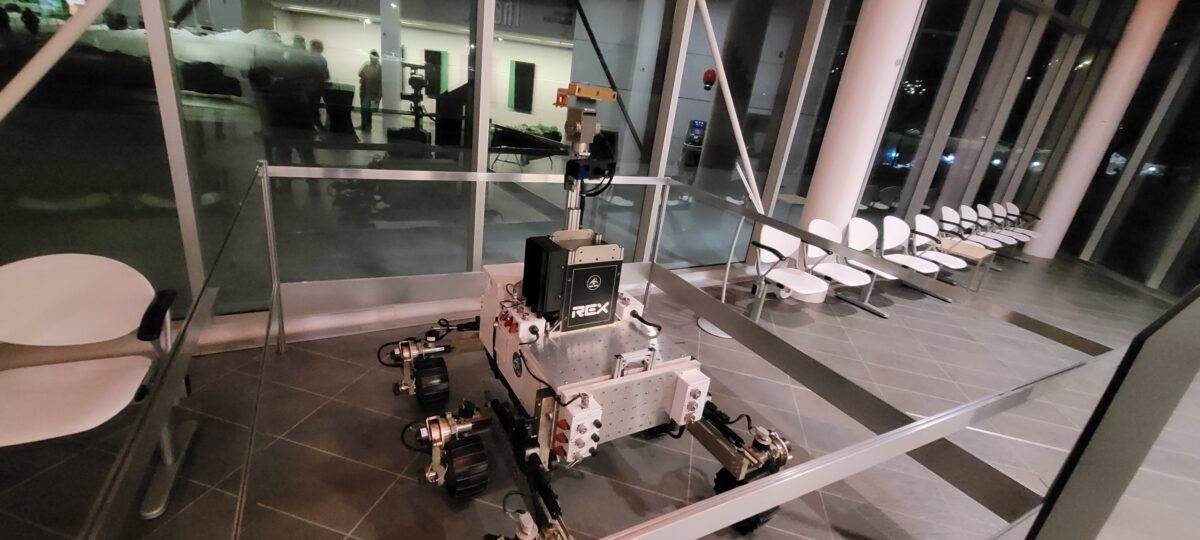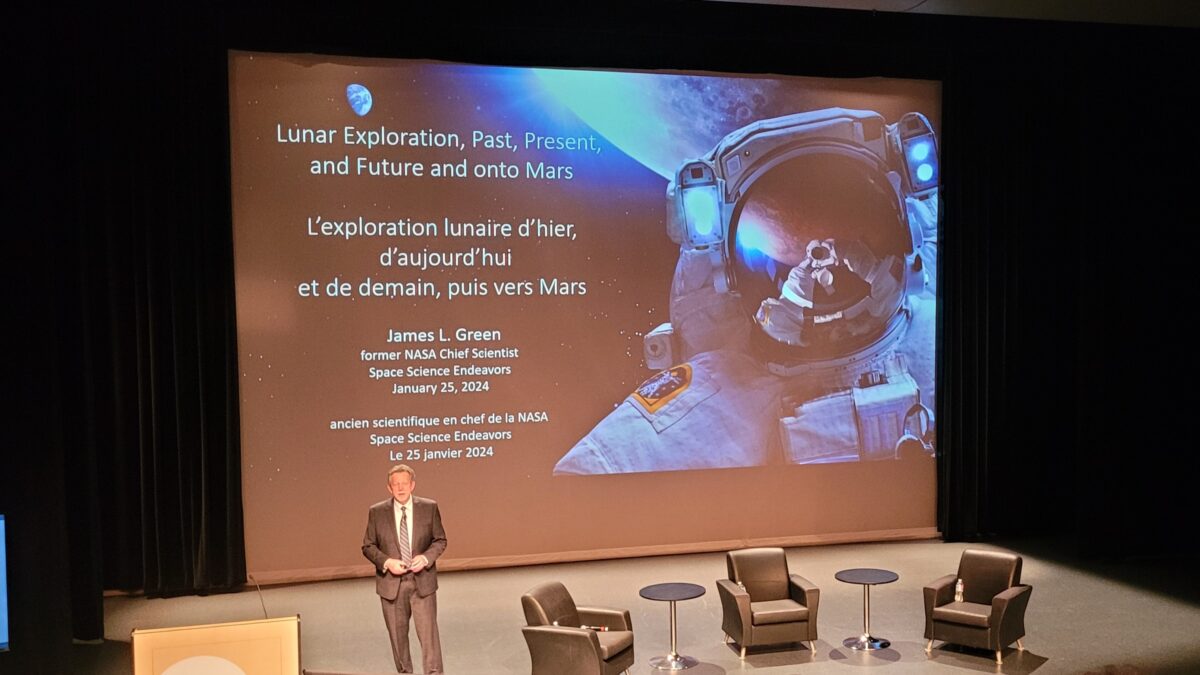It took 25 days of the 2024 calendar year for the first full moon of the cycle to appear in the sky. Coincidentally, for Ottawa residents interested in this mysterious celestial object, that evening offered the opportunity to have all their questions answered.
The Ingenium Foundation hosted a lecture titled “Lunar Exploration: Past and Present” at the Canadian Space and Aviation Museum on Jan. 25. The event was fronted by keynote speaker Dr. James Green, former chief of science at NASA, and Dr. Caroline-Emmanuelle Morisset, program scientist with the Canadian Space Agency.
A crowd of space enthusiasts filed past the museum’s gallery of replica aircraft into a lecture hall where they had an opportunity to ask the experts questions.
Green brought 40 years of experience at the U.S. space agency with him to the auditorium. Since retiring in 2022, he has worked in many outreach programs and has preached the importance of broader society having an understanding of astronomy.
“We as a human species are not going to survive long without space,” argued Green, highlighting the importance of orbiting satellites and other aerospace achievements.“Our spacecraft can determine the beginning of a growing season, can tell us what we should export and import and can predict natural disasters before they happen.”
‘Exploring space gives us a great opportunity. In space, we can work and practice peace together.’
— Dr. James Green, former chief of science at NASA
Morisset provided the audience with a more localized and contemporary look at the current state of Canadian lunar exploration. Canadian astronaut Jeremy Hansen is among the astronauts scheduled to take part in NASA’s next manned mission to the moon and back in September 2025.
“The CSA is working to find what the best methods are to ensure that astronauts stay healthy and have care even though they are far away,” said Morisset. “This also has commonality with ways we can help communities in Canada that are more remote and don’t have access to healthcare.”
Having an American and a Canadian keynote speaker accentuated the theme of working beyond established borders that was prevalent throughout the lecture. Space exploration has historically been a collaborative process between nations. For example, Canada is a partner with the U.S., Japan, Russia and the European Space Agency in operating the International Space Station in low orbit about 400 kilometres above Earth.
“Exploring space gives us a great opportunity,” said Green. “In space, we can work and practice peace together.”
Many members of the broader scientific community attended the event, including university instructors.
“I am always interested in events like this,” said Pamela Wolff, a Carleton University chemistry professor. “Space exploration is very fascinating.”
Space exploration, particularly that of the moon, has become a hot-button topic in recent years. NASA’s Artemis program, a point of discussion throughout the evening, is a multi-step project expected to culminate with human beings touching down on the lunar surface in late 2026.
Hansen is part of the Artemis II mission, during which flight crew aboard the Orion spacecraft plan to orbit the moon without landing before returning to Earth. Artemis III is expected to result in the first moon landing by humans in more than 50 years.
NASA hopes that the Artemis missions will capture the world’s imagination the way the famous mission did 55 years ago when U.S. astronaut Neil Armstrong left his ever-lasting footprint on the moon in July 1969.
Exploring Mars is viewed as the next logical step in space exploration, and was also discussed throughout the night. Many of NASA’s scientists have reason to believe that the dusty, frigid red planet was once covered in water like Earth. Green has an extensive knowledge of this, as he even served as the scientific advisor for Ridley Scott’s blockbuster 2015 science-fiction film The Martian.
The Ingenium Foundation, which operates the space museum as well as the Canada Science and Technology Museum and the Canada Agriculture and Food Museum, organized the event to get more people interested in understanding our universe.
“Space exploration benefits everyone, and lots of people don’t know about that,” said Cassandra Marion, the event’s moderator and a geologist and planetary scientist with Ingenium. “Every time someone uses a cell phone, they use space technology. Every time someone checks an email, they use space technology. In a general way, it’s important we hold space events just to share the excitement and share the knowledge about why space is important.”
Drawing in youth interest is something that both NASA and the Ingenium Foundation say they prioritize. Green has hosted a NASA-sponsored podcast aimed at young science enthusiasts titled “Gravity Assist.”
“A ‘gravity assist’ is a planetary term we use in space exploration,” said Green. “But everyone in NASA and the CSA had their own ‘gravity assists’ — something or someone that pushed them to explore their interests in space and science further.”

A model rover displayed in the lobby of the Canadian Space and Aviation Museum [Photo © Ryan Clark]




